Third anniversary of the deletion of Article 370 brought out the usual round of protests from Pakistani and POK leaders. August 5 has been named Yom-e- Istehsal or the Day of Exploitation. The Prime Minister of POK Tanveer Ilyas led a protest rally in front of the UNMOGIP office in Muzaffarabad. Foreign Minister Bilawal Bhutto addressed a letter to the OIC.[1] While article 370 was in force, Pakistan’s stand was that ‘autonomy’ is not a substitute for ‘Azadi’. Pakistan’s narrative ignores the fact that there is neither ‘Azadi’ nor autonomy in POK and Northern Areas, since re-named Gilgit-Baltistan (G-B). Both suffer from a democratic deficit.
Pakistan criticizes the creation of the two Union Territories of J&K and Ladakh by India in 2019. It had split the territory illegally occupied by it nearly seven decades ago into Northern Areas and POK. The Northern Areas account for 85% of the total territory, while the so-called ‘Azad Jammu and Kashmir’ or POK is merely a rump of 15%. The Northern Areas have been under Pakistan’s direct control since the beginning.
The Northern Areas were supposed to have been brought under Pakistan’s direct control in 1949 when Pakistan and POK leaders signed the Karachi Agreement.[2] The agreement was kept secret since Pakistan had changed the territorial status quo without reference to the ‘wishes of the people’. This came to light in 1993, when POK High Court in a historic judgment described it as a violation of UNSC resolutions. The High Court asked the POK government to immediately resume control of the territory. This was a huge embarrassment to Pakistan at a time when it was raising J&K issue in the UN General Assembly. Islamabad got the High Court’s judgment overturned by the POK Supreme Court. This was done on the purely procedural ground that the Court lacked jurisdiction over the Northern Areas which were not part of POK. This was strange logic. The issue under dispute between the people of POK and Pakistan was being described as a priori settled.
Pakistan’s narrative keeps changing. Actually, even before Karachi Agreement, the administration of the Northern Areas was taken over by Pakistan in November 1947. Major Brown, who raised the flag of revolt against Maharaja in Gilgit on November 1, 1947, has mentioned in his memoirs that he handed over control of the area to Pakistan’s political agent, who was a Tehsildar of NWFP.[3] The territory was administered by NWFP rather than handed over to the ‘Provisional Government’ of POK declared by Sardar Ibrahim Khan. It was run on the basis of dreaded FATA laws applicable to Federally Administered Tribal Areas in the NWFP province.
POK was run on the basis of Rules of Business by the Federal Ministry of Kashmir Affairs for more than two decades. Elections were held under Ayub Khan in POK, as well as Pakistan in 1964, to elect Basic Democrats. These were held on the basis of a very limited franchise. The first election in POK on the basis of the universal franchise was held only in 1970 – twenty-three years after the territory was illegally occupied by Pakistan.
The elections under the ‘Interim Constitution of 1974’ were held in 1975. However, the elected assembly and the government had a short shelf-life. General Zia ‘persuaded’ the POK leaders to agree to the dissolution of the Assembly in 1977. This was followed by the sacking of the POK President by Zia. Was there anything unusual in what Zia did to the territory? After all he had overthrown the civilian government of Pakistan. There is a difference between the two situations. POK in Pakistan’s narrative is ‘Azad’ or free. Zia’s actions showed this was only fiction and Pakistan’s rulers changed the dispensation in Muzaffarabad at will. Zia used article 56 of the POK constitution to dismiss the elected President Sardar Ibrahim Khan.[4] Pakistan’s control over the territory is built into the POK constitution.
In the mythology carefully nurtured by Pakistan, Sardar Ibrahim Khan has a special role. He was the first President of POK and served four terms in that position at different points in time. He was dismissed at the end of his first term in 1949 also. This was the beginning of the Sudhan revolt which lasted until after the mid-fifties. He was not the only one to have suffered this fate. Chaudhary Ghulam Abbas, the Chairman of the Muslim Conference, was disqualified from taking part in elections in 1964.[5] Khurshid, Jinnah’s PA, who served as POK President was arrested in 1965.[6] Pakistan has built up Kashmiri leaders as heroic figures for propaganda purposes, but treated them ruthlessly inside POK.
Between 1977 and 1985, there was an 8 years gap when there were no elections in POK. The territory had returned to the norm of the first two decades of existence. When the elections were held in 1985, PPP Azad Kashmir boycotted the elections. In the elections of 1990, JKLF did not participate. On the face of it, it had chosen to ‘boycott’ the elections. Under the POK’s constitution, all political parties and individuals have to accept the ‘ideology of accession to Pakistan’. Parties suspected of espousing independence option are not allowed to participate in elections. It is ironic that the party raising the ‘Azadi’ slogan in the Indian state of J&K is not allowed to participate in elections in POK.[7] There has been no change in the situation since.
In the case of Northern Areas, the territory remained without a representative government for much later. This was noted by Pakistan Supreme Court in its judgment of 1999. The Supreme Court asked the Pakistan government to ensure that the territory got a representative government within 6 months. Two decades later, Pakistan Supreme Court noted in its judgment of 2019 that the progress in implementing its earlier judgment was ‘fitful’ at best.[8]
Elections are meaningless if the elected governments do not have substantive powers. Under POK’s constitution, as well as Gilgit-Baltistan Orders, most of the powers of taxation are vested in Pakistan. Pakistan also controls water and strategic highways - two chief economic resources of the territory. POK gets 15 paise per unit for waters of Mangla Dam, but is denied hydro-power royalty of Rs. 1.10 per unit given to Punjab and Khyber-Pakhtunkhwa provinces of Pakistan.[9] Thus, Pakistani provinces get 7 times as much for their water resources. This discrimination is justified on the ground that POK is not part of Pakistan. Its distinct status did not come in the way of exploiting its resources. This became a problem only when it came to paying for them. The situation in Gilgit-Baltistan is much worse. Its Chief Minister complained last year that while hydro-power projects being constructed in the territory under CPEC will be used to supply electricity to the national grid of Pakistan, G-B is not connected to it.[10]
Endnotes :
[1]The Express Tribune, Political leaders in AJK observe ‘Youm-e-Istehsal’ August 6, 2022
[2]Sarraf, M.Y.(1979) Kashmiris Fight – For Freedom, Vol 2, page 860 as cited in Forgotten Kashmir: The Other Side of the Line of Control, page 48
[3]Brown, W (2014) Gilgit Rebellion: The Major Who Mutinied Over Partition of India, p 138, as cited in Forgotten Kashmir: The Other Side of The Line of Control, page 31.
[4]Gilani, S.M.H. The Constitution of Azad Jammu and Kashmir, page 555, as cited in Forgotten Kashmir: The Other Side of the Line of Control, page 160
[5]Sarraf, M.Y.(1979) Kashmiris Fight – For Freedom, Vol 2, page 1340 as cited in Forgotten Kashmir: The Other Side of the Line of Control, page 110
[6]Sarraf, M.Y.(1979) Kashmiris Fight – For Freedom, Vol 2, page 1344 as cited in Forgotten Kashmir: The Other Side of the Line of Control, page 110
[7]Forgotten Kashmir: The Other Side of the Line of Control, Page 180
[8]Forgotten Kashmir: The Other Side of the Line of Control, page 259
[9]Forgotten Kashmir: The Other Side of the Line of Control, page 289
[10]The Express Tribune, G-B to benefit from Chinese investment, May 30, 2021
(The paper is the author’s individual scholastic articulation. The author certifies that the article/paper is original in content, unpublished and it has not been submitted for publication/web upload elsewhere, and that the facts and figures quoted are duly referenced, as needed, and are believed to be correct). (The paper does not necessarily represent the organisational stance... More >>
Image Source: https://images.newindianexpress.com/uploads/user/imagelibrary/2022/8/12/w900X450/ukraine.JPG?w=640&dpr=1.0


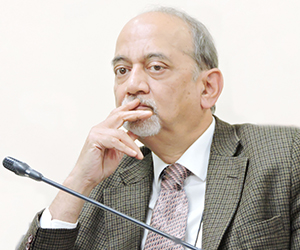

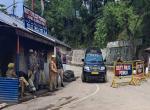
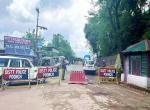
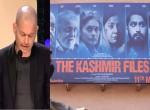

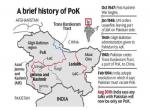
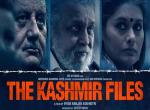

Post new comment